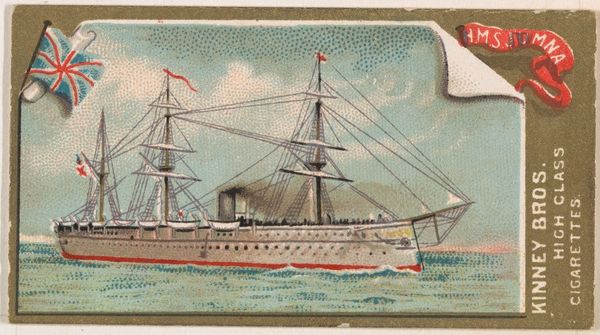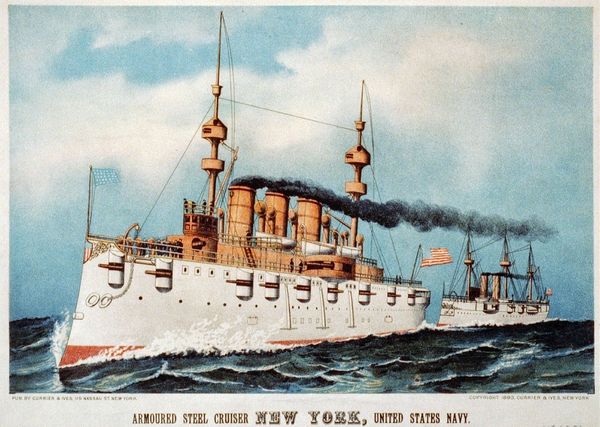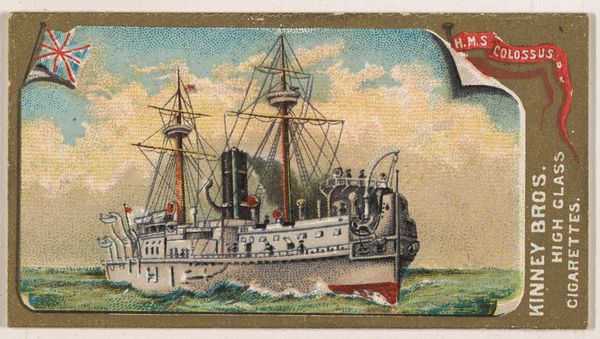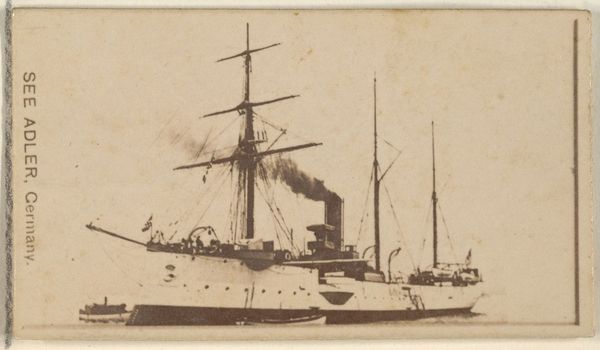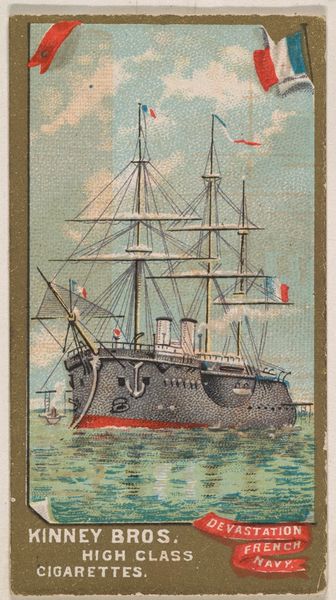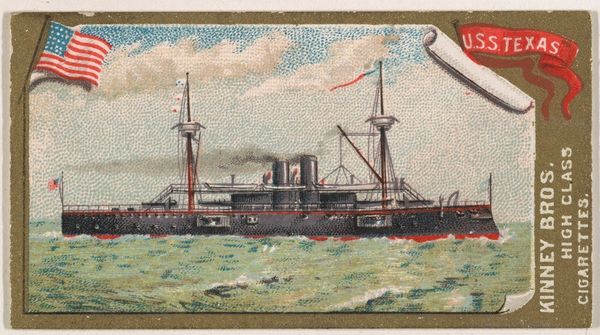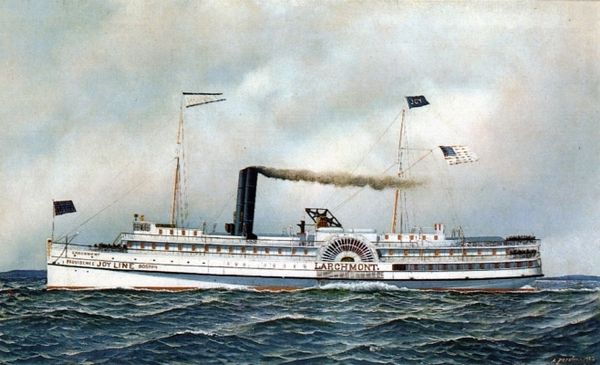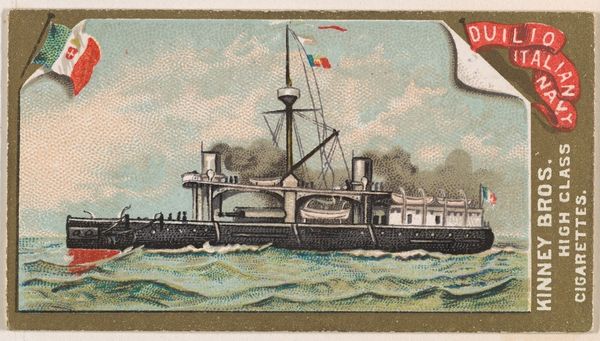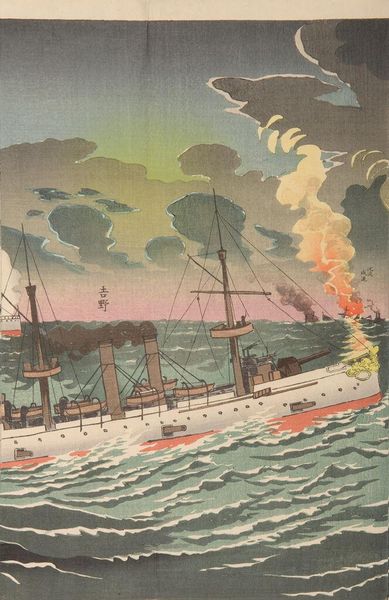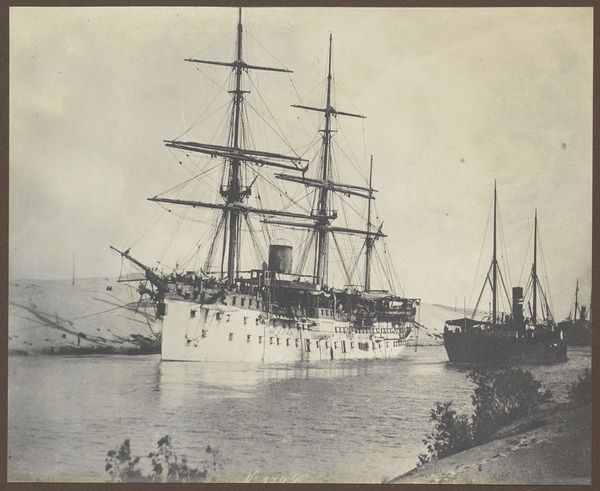
Copyright: Public domain
Editor: We’re looking at "Protected steel cruiser Philadelphia, United States Navy," a print by Currier and Ives from 1893. It depicts three warships cutting through choppy water. It has this real feeling of forward momentum; what stands out to you? Curator: Observe how the composition directs your eye. The ship in the foreground dominates the pictorial space, establishing a clear hierarchy within the image. Note the contrast between the dark smoke billowing from the central vessel and the otherwise bright, almost sterile white of the ships. What effect do you believe this contrast achieves? Editor: I guess it makes that ship seem really powerful and important? Curator: Precisely. Further examine the linearity inherent in the masts and rigging. The strict geometry serves to compartmentalize the scene. The picture plane becomes a network of carefully orchestrated lines and shapes that draw attention to the ships’ architectural details, especially given the almost photorealistic quality of its lithographic form. How do you perceive the interplay between form and representation? Editor: It's like the ships themselves are almost secondary to the shapes they create. Like it's more about line, shape, and composition than accurately portraying a warship. Curator: Your interpretation hits the mark. This reading allows us to perceive the piece not merely as representational, but also as an exercise in formal arrangement. Editor: This really makes me think about printmaking in a totally new way, focusing on shapes, line, and visual construction. Thanks! Curator: A fascinating glimpse indeed into how representational imagery can serve as the bedrock for structural explorations.
Comments
No comments
Be the first to comment and join the conversation on the ultimate creative platform.
